Mississippi is home to a variety of snakes, including six venomous species. While most snakes are harmless and play an important role in the ecosystem, some can be dangerous to humans.
In this article, we will focus on the top 4 largest and most dangerous snakes in Mississippi. These snakes are known for their venomous bites and can be found in various habitats throughout the state. Knowing how to identify these snakes and their habitats can help you stay safe while enjoying the outdoors in Mississippi.
You are reading: Top 4 Largest And Most Dangerous Snakes In Mississippi
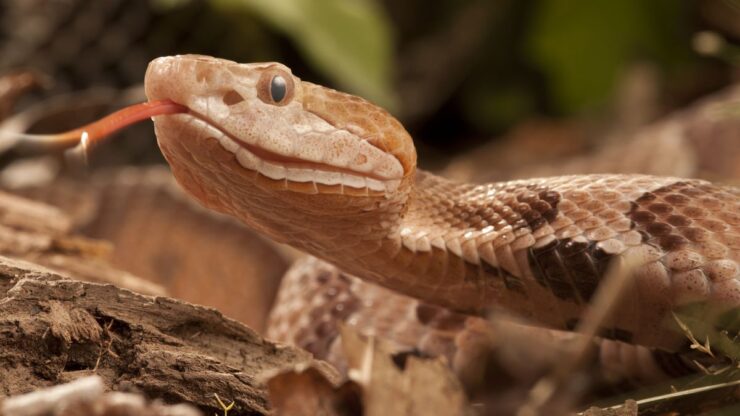
Top 4 Largest And Most Dangerous Snakes In Mississippi
Eastern Diamondback Rattlesnake (Crotalus adamanteus)
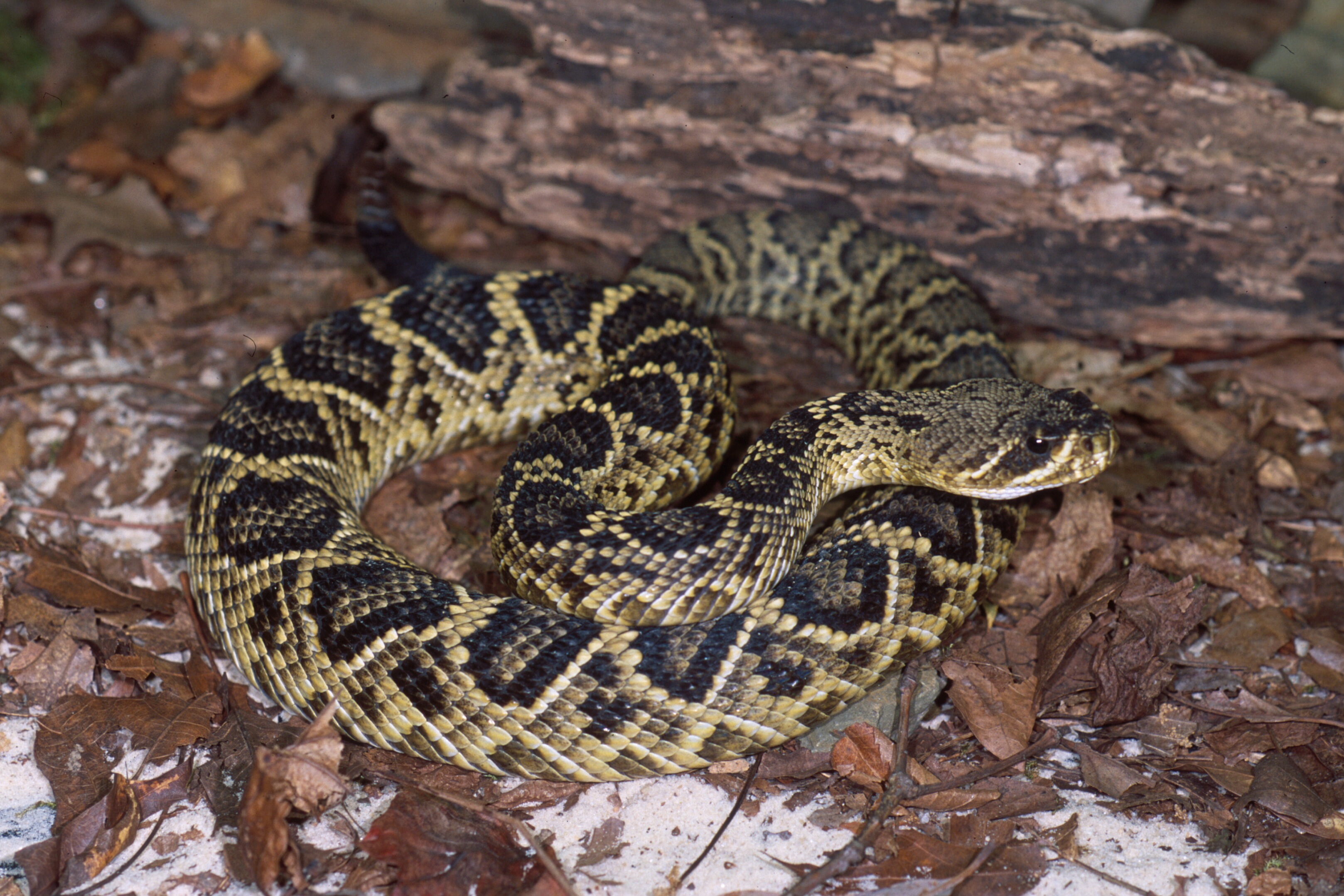
The Eastern Diamondback Rattlesnake (Crotalus adamanteus) is a venomous pit viper that is native to the southeastern United States. It is the largest rattlesnake species in the world, and one of the heaviest venomous snakes in the Americas.
Adult Eastern Diamondback Rattlesnakes can grow up to 8 feet long, but they usually range from 3-6 feet long. They have large, broad heads with two light lines on the face, and a row of large dark diamonds with brown centers and cream borders down their back.
The ground color of their body is brownish, and their tail ends in a rattle, which is often held above the ground. Eastern Diamondback Rattlesnakes can be found in the pinelands of Florida, the coastal plains of North Carolina and southern Mississippi through eastern Louisiana.
They prefer scrublands, coastal forests, barrier islands, and pine and wiregrass flatwoods, and can be found in slightly more moist areas, such as wet prairies or savannas and around the borders of wetlands. While they tend not to prefer wet areas, these snakes are adept swimmers and will occasionally swim in saltwater between barrier reefs and along the edges of swamps.
Cottonmouth (Agkistrodon piscivorus)
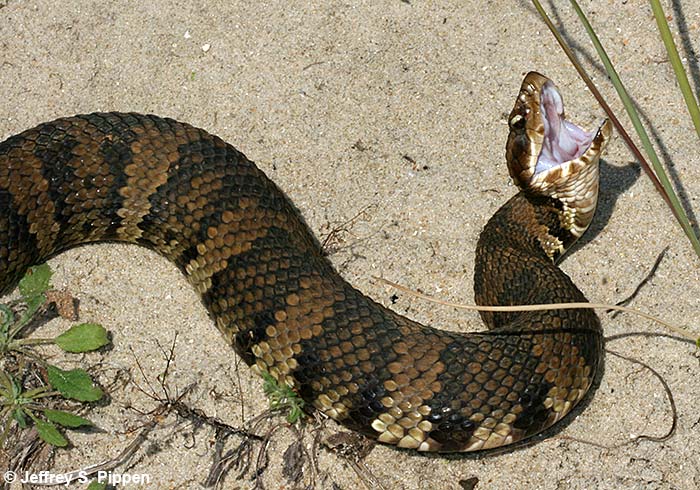
The Cottonmouth (Agkistrodon piscivorus) is a venomous pit viper that is native to the southeastern United States. They are also known as water moccasins due to their semi-aquatic nature.
Cottonmouths are large, heavy-bodied snakes that can grow up to 4-6 feet long. They have triangular-shaped heads with vertical pupils and keeled scales. Their coloration varies from dark olive-brown to almost black, with dark crossbands that may not be visible. The top of their head is dark brown or black, and a dark, wide band may be visible from the snout through the eye and onto the neck.
Cottonmouths are found in parts of North Carolina, South Carolina, Georgia, Kentucky, Illinois, Indiana, Tennessee, and all of Louisiana, Alabama, Mississippi, and Arkansas. They are often found in and around water, such as swamps, marshes, and lakes.
Cottonmouths are opportunistic feeders and will eat a wide range of prey, including insects, fish, frogs, salamanders, small turtles, snakes (including other cottonmouths), lizards, baby alligators, birds, small mammals, and carrion. While they are not typically aggressive, they will defend themselves if threatened.
Eastern Copperhead (Agkistrodon contortrix)
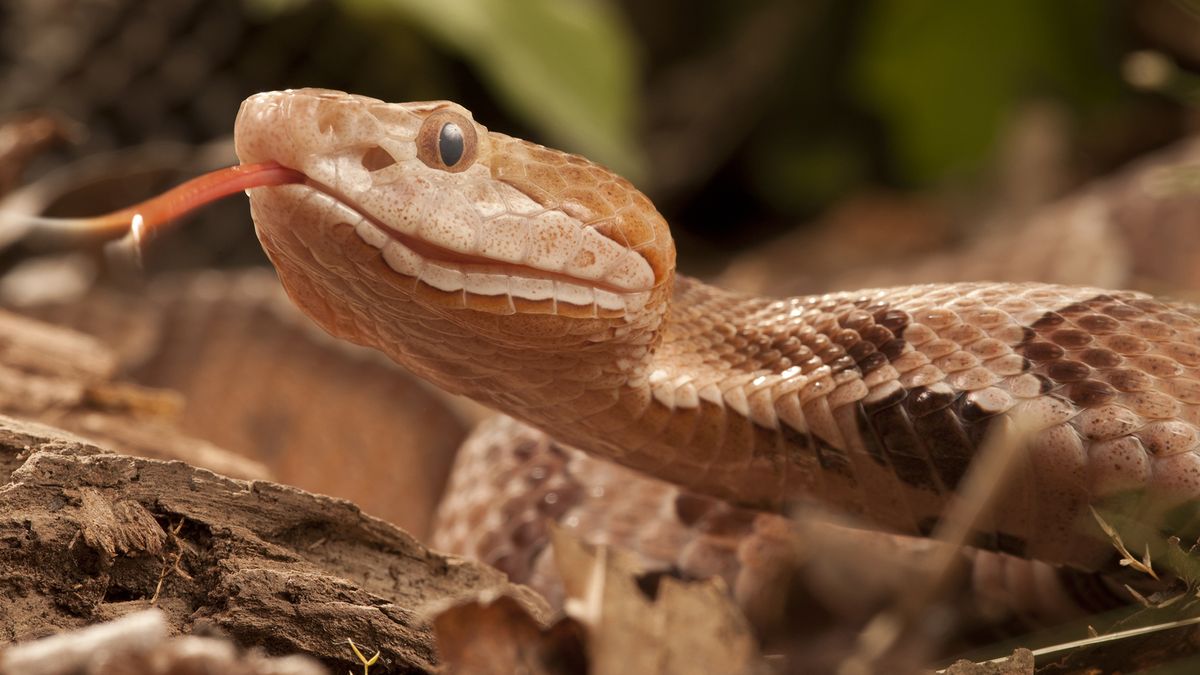
The Eastern Copperhead (Agkistrodon contortrix) is a venomous pit viper that is native to eastern North America. Here are some key characteristics of this species:
– Size: Copperheads are fairly large, ranging from 24-40 inches in length.
– Appearance: They have large, triangular heads and elliptical pupils (cat eyes). As juveniles, they are light gray with rich brown bands and a yellow-tipped tail that fades with age. As adults, they are light brown or gray with hourglass-shaped crossbands that are wider on the sides.
– Habitat: Eastern Copperheads can be found in deciduous forests and mixed woodlands in southern Illinois, extreme northeastern Mississippi, northern Alabama, northern Georgia northeast to Massachusetts, the Appalachian Mountain region, and associated plateaus.
– Diet: Copperheads are carnivorous and feed on a variety of prey, including rodents, lizards, frogs, and insects.
– Behavior: Copperheads are generally not aggressive and will try to avoid humans if possible. However, they will defend themselves if threatened.
It’s important to note that while copperheads are venomous, their bites are rarely fatal to humans. If you encounter a copperhead in the wild, it’s best to give it plenty of space and avoid disturbing it.
Pygmy Rattlesnake (Sistrurus miliarius)
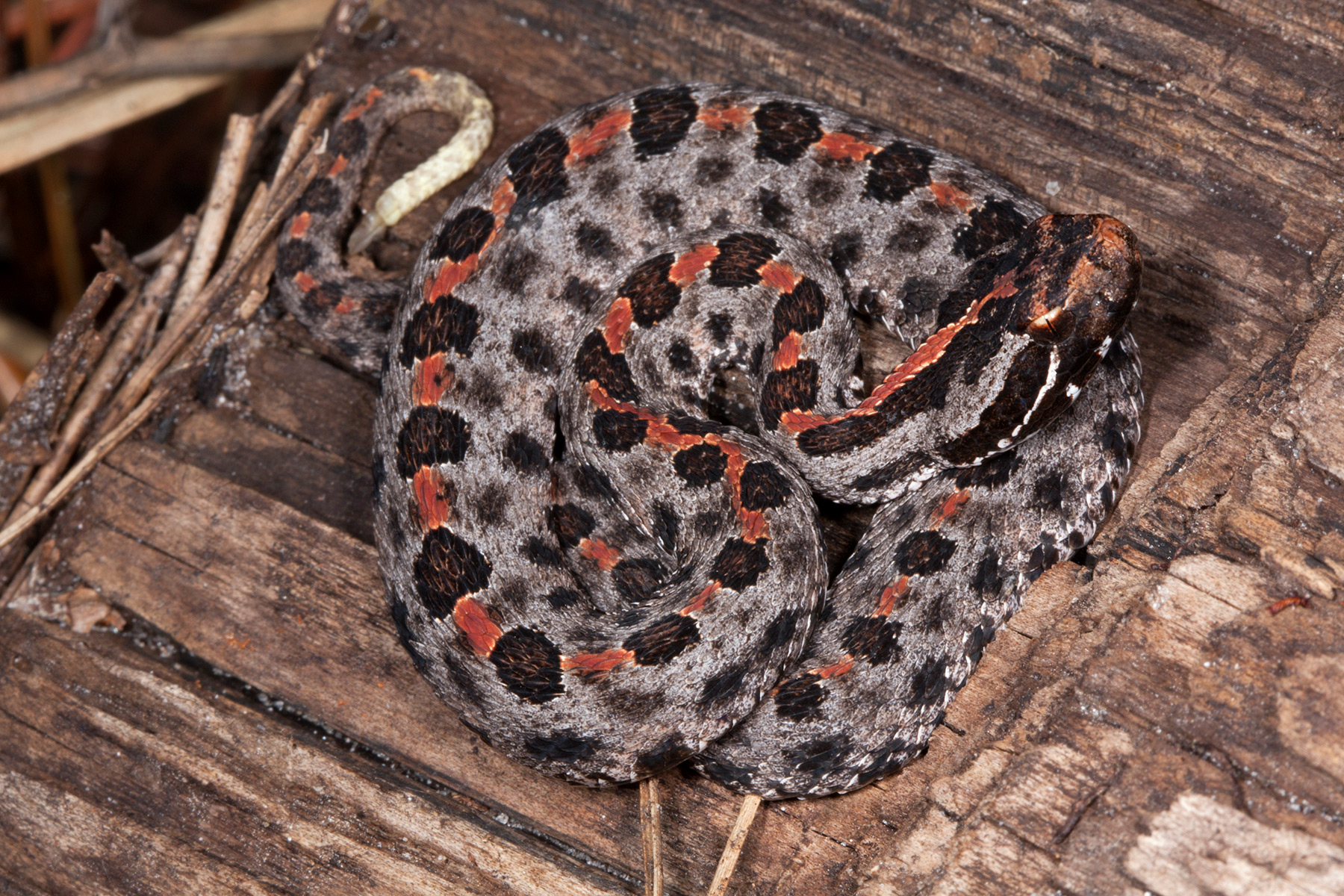
Read more : Discover 15 Types Of Rattlesnakes In Arizona
The Pygmy Rattlesnake (Sistrurus miliarius) is a venomous snake that belongs to the genus Sistrurus and is commonly referred to as a pigmy rattler or ground rattler.
Here are some key facts about this species:
– Size: Pygmy rattlesnakes are small, typically growing to be 14-22 inches long.
– Appearance: They have a distinctive pattern of dark brown or black spots on a light gray or tan background. They also have a rattle on the end of their tail, which they use to warn potential predators.
– Habitat: Pygmy rattlesnakes are native to the southeastern United States and are most often found in the southeastern region of the country. They prefer flatwoods, both pine and hardwood forests, and the environs of swamps.
– Diet: Pygmy rattlesnakes are carnivorous and feed on a variety of prey, including lizards, frogs, rodents, and insects.
– Behavior: Pygmy rattlesnakes are generally not aggressive and will try to avoid humans if possible. However, they will defend themselves if threatened.
Of the three subspecies that are currently recognized, only the Dusky Pygmy Rattlesnake (Sistrurus miliarius barbouri) is found in Florida.
FAQS
1. What are the top 4 largest and most dangerous snakes in Mississippi?
The top 4 largest and most dangerous snakes in Mississippi are the Eastern Diamondback Rattlesnake, Cottonmouth, Eastern Copperhead, and Pygmy Rattlesnake.
2. Are all of these snakes venomous?
Yes, all four of these snakes are venomous.
3. What should I do if I encounter one of these snakes in the wild?
If you encounter one of these snakes in the wild, it’s best to give it plenty of space and avoid disturbing it. These snakes will generally try to avoid humans if possible, but they will defend themselves if threatened.
4. Are these snakes commonly found in residential areas?
While these snakes can be found in a variety of habitats, including residential areas, they are more commonly found in natural habitats such as forests, swamps, and wetlands.
5. What should I do if I am bitten by one of these snakes?
If you are bitten by one of these snakes, seek medical attention immediately. Do not attempt to suck out the venom or use a tourniquet, as these methods can actually make the situation worse.
6. How can I avoid encounters with these snakes?
To avoid encounters with these snakes, it’s important to be aware of your surroundings and watch where you step when walking in natural habitats. Wear protective clothing and shoes, and carry a snakebite kit if you will be spending time in areas where these snakes are known to live.
Source: https://petstutorial.com
Category: Animals










